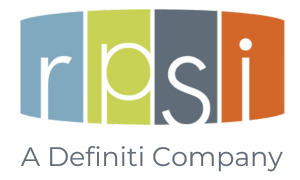Plan Sponsor Outlook – 3rd Quarter 2022
Making Portfolios Personal
A recent survey showcases the increasing desire for in-plan ESG investment options
A new survey offers some key insights into why plan sponsors may want to consider building an investment lineup to meet the growing demand for sustainable options from workplace retirement plan participants. Most notably, nearly three-quarters (74%) of retirement plan participants said they would increase their contribution rate if offered sustainable investments, compared to 69% in 2021, according to the Schroders 2022 U.S. Retirement Survey. Survey respondents said they want their investments to be aligned with their values (87%), and they see environmental, social and governance (ESG) investments as a driver of performance (78%).
In addition, of the 31% of 401(k) plan participants who have ESG options in their plan, 90% invested in those options and 73% estimate allocating 50% or more of their assets to sustainable investments. The survey also revealed where participants want to make an impact. Although ESG is typically associated with issues such as climate action and product integrity, the survey found that the top ESG issues for U.S. investors are actually social in nature—focused on workers and communities. When asked which ESG segments they would like their investments to make an impact on, plan participants that currently invest in ESG, or would if they had the option, said:
- Employee welfare/living wage: 51%
- Climate change/global warming/carbon reduction: 39%
- Human rights: 36%
- Biodiversity (pollution, deforestation, clean water): 30%
- Diversity and inclusion: 22%
- No specific area: 17%.
Guidance for Plan Sponsors and Advisors
The Schroders survey also offers this general guidance for plan sponsors and their advisors:
- Plan sponsors that are considering adding ESG options must adhere to the same rigorous fiduciary investment selection and monitoring process.
- Any ESG funds included must be based on their economic rationale; engaging with an ESG plan expert may help expedite the process.
- Plan sponsors and advisors will also have to plan for a comprehensive campaign to educate participants on ESG investing.
- If the plan sponsor selects an investment for the plan based on its ESG attributes, it will need investment managers to provide sufficient data to demonstrate how the fund is promoting ESG and meeting its stated objectives and guidelines.
- Once the plan sponsor has a clear understanding of its goals in making ESG options part of the plan offering, an important next step is to ensure the investment policy statement reflects those goals.
For supplemental guidance and information, check out the Defined Contribution Institutional Investment Association white paper, “Incorporating ESG in DC Plans: A Resource for Plan Sponsors.”

Using Your Plan to Help Attract and Retain Employees
More employers are enhancing their retirement plan to compete for new employees — and keep the ones they have
Increasingly, plan sponsors are refreshing their workplace retirement plans to give employees both the opportunity to save more for retirement and the flexibility to use both their personal and employer contributions in innovative ways to manage their financial needs. This trend comes as employers increasingly look to boost their employees’ retirement security and financial well-being, according to findings in the 2022 Next Evolution of DC Plans Survey from Willis Towers Watson.
The survey results show that more than one in four respondents (28%) expect to make changes to their plans’ automatic deferral features, whereas four in 10 plan sponsors (38%) expect to adopt an innovative contribution strategy. These strategies include allowing participants to use their contributions to reduce student loan debt or directing contributions to an emergency savings fund or a health savings account.
Using the Retirement Plan As a Key Attraction and Retention Tool
More than half of the survey respondents (55%) expect to have attraction and retention issues over the next two years, with one-third (36%) of those considering their retirement plan as an important tool to attract and retain employees. Significant gaps in priorities are expected over the next two years between sponsors that connect their plan with attraction and retention and those who do not. Those that do are focusing on using their defined contribution (DC) plan to enhance employee engagement for retention, raise the importance of attracting new talent and align diversity, equity and inclusion goals.
According to the survey, 75% of employers plan to enhance their defined contribution retirement plan offerings to better support the financial needs of their current employees, and remain competitive to potential recruits. Eighty-two percent of employers plan to focus on changing and enhancing the employee experience when engaging with their retirement plans. Almost all employers plan to offer personalized one-on-one support, and 91% plan to boost their digital tools to help employees with budgeting and spending.
The 2022 Next Evolution of DC Plans Survey was conducted during January and February 2022. A total of 363 U.S. employers that sponsor a DC plan participated in the survey. Respondents employ 8.4 million employees and represent a broad range of industries. Results can be viewed at: https://tinyurl.com/ye597yp9.

Plan Sponsors Ask…
On March 10, the U.S. Department of Labor (DOL) published compliance assistance for 401(k) plan fiduciaries who are considering plan investments in cryptocurrencies. Published by the department’s Employee Benefits Security Administration), Compliance Assistance Release No. 2022-01 cautions plan fiduciaries to exercise extreme care before they consider adding a cryptocurrency option to a 401(k) plan’s investment menu for plan participants. The DOL called it an effort to “protect the retirement savings of U.S. workers” and came one day after President Biden signed an Executive Order on Ensuring Responsible Development of Digital Assets. Part of the order instructs the Federal Reserve to explore the development of a U.S. Central Bank Digital Currency.
Updated research released last March from the Investment Company Institute (ICI) details just how far fees and expense ratios have fallen over the past 25 years. For example, the institute found that equity mutual fund expense ratios averaged 0.47% in 2021, compared with 1.04% in 1996; bond mutual fund expense ratios averaged 0.84% in 1996 and fell to 0.39% in 2021. ICI’s report also shows that in 2021, the average expense ratio of actively managed equity mutual funds was 0.68%, down from 1.08% in 1996. Average index equity mutual fund expense ratios were 0.06%, compared with 0.27% in 1996.
The Employee Benefit Research Institute issue brief, “Field of Dreams? Measuring the Impact of Financial Wellbeing Initiatives on 401(k) Plan Utilization” summarizes the extent to which the attendance of financial wellness webinars affected 401(k) plan participant behaviors. According to the report, participants’ estimated increase in 401(k) contributions after attending any financial wellbeing webinar was between $649 and $988, depending on age and initial contribution level.
Use of a budgeting webinar was positively related to increased employee 401(k) contributions for all participants. And for younger and lower contributing workers who attended a budgeting webinar, average contributions went up $3,284. In addition, participants’ contribution levels increased after workers used nine of 10 of the webinars.
Pension Plan Limitations for 2022
- 401(k) Maximum Elective Deferral – $20,500* (*$27,000 for those age 50 or older, if plan permits)
- Defined Contribution Maximum Annual Addition – $61,000
- Highly Compensated Employee Threshold – $135,000
- Annual Compensation Limit – $305,000

The “Great Job Switch?”
According to the Bureau of Labor statistics, while 4.4 million workers decided to leave their jobs in February 2022, about 6.7 million people were hired during that same time. Many industry analysts believe it’s more appropriate to call this trend “The Great Job Switch” instead of “The Great Resignation.”
Plan Sponsor’s Quarterly Calendar
- Audit third-quarter payroll and plan deposit dates to ensure compliance with the DOL’s rules regarding timely deposit of participant contributions and loan repayments.
- Verify that employees who became eligible for the plan between July 1 and September 30 received and returned an enrollment form. Follow up on forms that were not returned.
- For calendar-year safe harbor plans, issue the required notice to employees during October or November (within 30–90 days of the beginning of the plan year to which the safe harbor is to apply). Also, within the same period, distribute the appropriate notice if the plan features an Eligible Automatic Contribution Agreement, Qualified Automatic Contribution Agreement and/or Qualified Default Investment Alternative.
- Prepare to issue an announcement to employees to publicize the plan’s advantages and benefits, and any plan changes becoming effective in January.
- Conduct a campaign to encourage participants to review and, if necessary, update their mailing addresses to ensure their receipt of Form 1099-R to be mailed in January for reportable plan transactions in the current year.
- Check current editions of enrollment materials, fund prospectuses and other plan information that are available to employees to ensure they are up to date.
- Provide quarterly benefit/disclosure statement and statement of plan fees and expenses actually charged to individual plan accounts during the prior quarter, within 45 days of the end of the last quarter.
- Prepare and distribute annual plan notices, such as the 401(k) safe harbor for safe harbor plans with a match, the Qualified Default Investment Alternative annual notice and automatic enrollment and default investment notices, at least 30 days before the plan year end.
- Prepare to send year-end payroll and updated census data to the plan’s recordkeeper in January for year-end compliance testing (calendar-year plans).
- Verify that participants who terminated during the second half of the year selected a distribution option for their account balance and returned the necessary form.
- Review plan operations to determine if any ERISA or tax-qualification violations occurred during the year and if using an Internal Revenue Service or DOL self-correction program would be appropriate.
Consult your plan’s financial, legal or tax advisor regarding these and other items that may apply to your plan.
Kmotion, Inc., 412 Beavercreek Road, Suite 611, Oregon City, OR 97045; 877-306-5055; www.kmotion.com
©2022 Kmotion, Inc. This newsletter is a publication of Kmotion, Inc., whose role is solely that of publisher. The articles and opinions in this publication are for general information only and are not intended to provide tax or legal advice or recommendations for any particular situation or type of retirement plan. Nothing in this publication should be construed as legal or tax guidance, nor as the sole authority on any regulation, law, or ruling as it applies to a specific plan or situation. Plan sponsors should always consult the plan’s legal counsel or tax advisor for advice regarding plan-specific issues.
This material is intended to provide general financial education and is not written or intended as tax or legal advice and may not be relied upon for purposes of avoiding any Federal tax penalties. Individuals are encouraged to seek advice from their own tax or legal counsel. Individuals involved in the estate planning process should work with an estate planning team, including their own personal legal or tax counsel.
